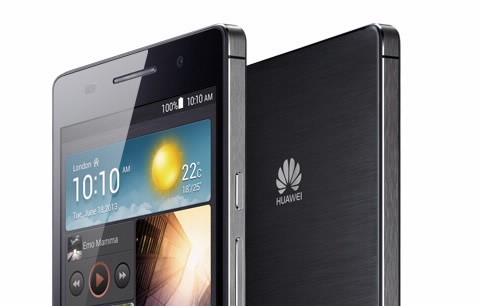Brandwatch: Sapphire-tinted glasses

Huawei is becoming the world’s most innovative and successful telecommunications manufacturer and service provider. But western markets remain unconvinced. Andrew Harrison explores Huawei’s forays outside its Chinese home of Shenzhen
In our last issue we looked at Alibaba – the new darling of the tech investment community. Alibaba’s recent IPO raised over $25bn, and the Dow Jones industrial average closed at its highest level of the year on 19 September, the day of the IPO.
If Alibaba is the current favorite of western investors, Huawei, the telecommunications network and services provider, could be the next. It’s already a great success story in its own right as the first ever Chinese company to enter Interbrand’s rankings, placing 94th.
Founded as recently as 1987, Huawei is now the largest telecommunications equipment maker in the world, having overtaken Ericsson in 2012. It has over 140,000 employees, and invests a staggering $5bn per annum in R&D. Its products and services have been deployed in more than 140 countries and it serves 45 of the world’s 50 largest telecoms operators.
Its breadth of operation – networks, handsets, services – combines the separate western silos of landline operators (think BT or AT&T), mobile networks (like Vodafone) and handset manufacturers (like Nokia) in one. Huawei’s lifeblood is innovation. It is involved in over half the rollouts of super- fast 4G mobile networks so far announced in Europe and has filings for close to 50,000 patents. All this frenetic activity takes place on a huge campus in the manufacturing city of Shenzhen, across the border from Hong Kong. The site boasts a buzzing “tower of 10,000 engineers,” meeting rooms designed as Zen gardens and an espresso bar with first-class baristas. Just across the road is the massive complex where Foxconn makes Apple’s iPhones and iPads.
Perhaps it’s the uneasy transition for the west as Chinese telecom firms such as Huawei have expanded from their vast home market to become global players.
So far, so typical for rapidly-expanding Chinese enterprise, but western sentiment has not yet fully embraced Huawei. Partly, it’s casting – Huawei ‘s founder, Ren Zhengfei, is a former Chinese Army engineer, a party connection not atypical in the higher levels of Chinese companies, but it differs from Alibaba founder Jack Ma’s background as an English teacher. Perhaps it’s the uneasy transition for the west as Chinese telecom firms such as Huawei have expanded from their vast home market to become global players. This is a worry for the western telco incumbents under threat for market share. It’s also a new challenge for those responsible for the integrity of critical telecom infrastructure.
The question of how to embrace Huawei is a challenge for the west. Perhaps unsurprisingly, protections run deepest in America. Huawei has worked on networks for a number of smallish mobile operators there, but its repeated attempts to buy American tech firms have been scuppered by official opposition. By contrast, in Britain, Huawei set up the ‘Cyber Security Evaluation Centre’ in Banbury in 2010 as a way of persuading purchasers, and the British government, that equipment from the manufacturer can be trusted. It operates in close cooperation with GCHQ, Britain’s signals- intelligence agency and its security-cleared staff, some of whom used to work for GCHQ, is responsible for making sure the networking equipment and software Huawei sells to British telecoms companies are reliable and secure.
In the meantime, the company will continue to forge ahead in its relentless acceleration – even leapfrogging Apple on key features. One of the most wanted new iPhone 6 features was sapphire glass, the hardest material in nature after diamonds, and also more sensitive to the touch than other screen protectors. More parochially, it stops your iPhone screen from cracking when the device is dropped. But with manufacturing challenges and high costs, Apple disappointed many by not putting sapphire glass covers on its new iPhone. By contrast, Huawei said recently that it would release a limited edition version of its high-end phone with sapphire glass screen protection stealing a market first from its US rival. In the red-hot commercial battle of modern day telecommunications, it looks like Huawei will be a key player for all to consider over the next decade and beyond.












